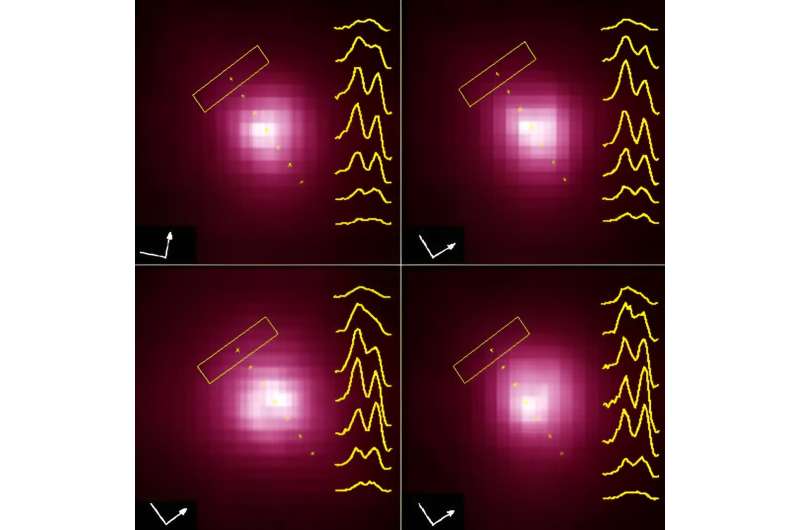This article has been reviewed according to Science X's editorial process and policies. Editors have highlighted the following attributes while ensuring the content's credibility:
fact-checked
preprint
trusted source
proofread
Does Betelgeuse even rotate? Maybe not

Betelgeuse is the well known red giant star in the corner of Orion the hunter. The name translated in some languages means "armpit of the giant," which, I think of all the star names, is simply the best! Betelgeuse has been fascinating observers of late not only because it unexpectedly faded a few years ago but more recently a study shows it's super fast rotational speed which is, when compared to other supergiants, is like nothing seen before.
One of the brightest stars in the northern hemisphere sky, in fact the tenth brightest, Betelgeuse has a stunning red color. It is a semi-regular variable star which means there is some regularity to its varied light output but there are occasions, perhaps lasting between 20 and 2,000 days where the variation is interrupted. If Betelgeuse were placed in the sun's position then its visible surface would more than likely extend beyond the orbit of Mars and swallow up everything in between.
Like all stars, Betelgeuse rotates but a recent study posted to the arXiv preprint server that used the Atacama Large Milimeter Array (ALMA) has shown that Betelgeuse is rotating faster than expected. Cool stars like Betelgeuse expand as they evolve and to conserve momentum the rotation must slow. It is possible that mass loss due to stellar winds decreases rotation speeds further. The current theory predicts that red giants rotate at around 1 km per second while red supergiants a little less than 0.1 km per second.
Current theory aside it seems there have been a number of observations of at least a few hundred giant stars rotating faster. Betelgeuse in particular has shown faster than expected rotation. Somewhat usefully, it's proximity to Earth has meant its surface can be resolved and accurate measurements taken. Measurements showed that half of the visible hemisphere was blue shifted and the the other half red shifted. We can use this information to accurately calculate a rotational velocity.
When it comes to Betelgeuse, the radial velocity with ALMA was measured to be around 5.47 km per second. This value was compared against previous observations using Hubble Space Telescope and thankfully this agreed. One leading theory takes binary star evolution as a possible cause and in particular a merger with a low mass companion star. This is not an unusual process with an expected one-third of red supergiants experience stellar merger before their core collapses marking the end of their life. When it comes to red giants the team considered the impact of merging with planetary systems on the rotational velocity.
There are complications however in attaining sufficient data but the team modeled 3D radiation hydrodynamic simulations of red supergiants with properties similar to Betelgeuse. Throwing a proverbial spanner in the works, the team suggests that it is possible that the observations could be wrong and false signals have been picked up from churning convective plasma at the surface rather than the rotation of the star itself!
In an attempt to ascertain if it is possible to accurately measure the rotational speed of red giants and supergiants they had to develop new processing techniques to establish predictions that they could compare with observations of Betelgeuse. The team finally concluded that to be able to establish without doubt that Betelgeuse and other red supergiants are rotating rapidly, higher resolution observations are required than current technology can reliably provide.
More information: Jing-Ze Ma et al, Is Betelgeuse really rotating? Synthetic ALMA observations of large-scale convection in 3D simulations of Red Supergiants, arXiv (2023). DOI: 10.48550/arxiv.2311.16885
Journal information: arXiv
Provided by Universe Today





















